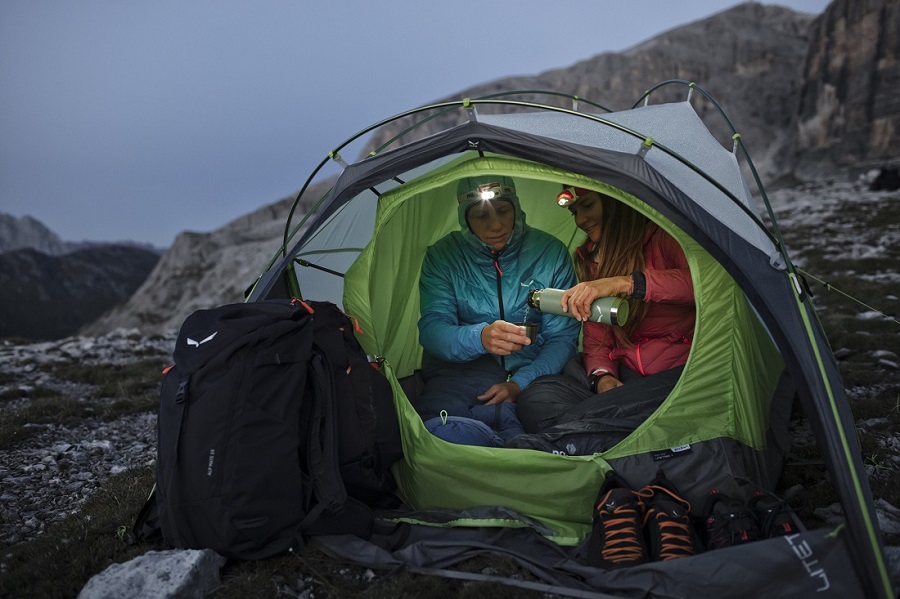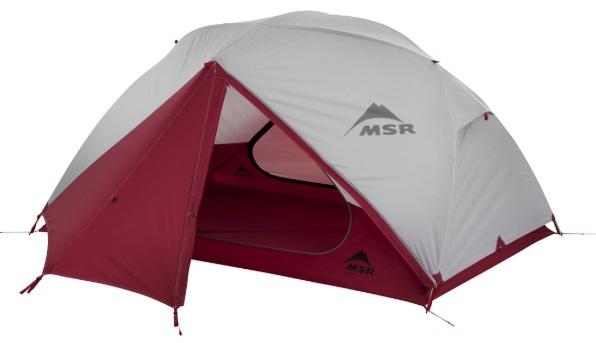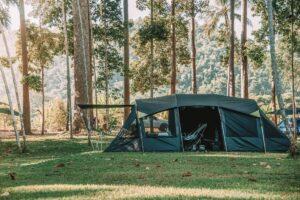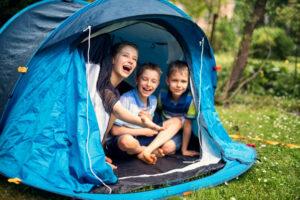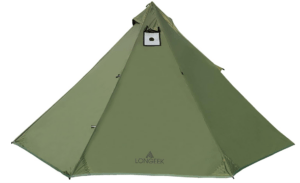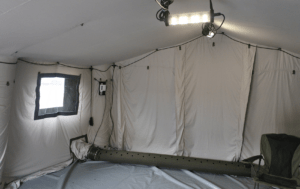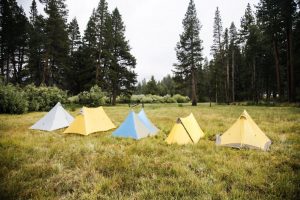Best lightweight tents for backpacking 2023 review
Table of Contents
Lightweight tents are becoming more and more popular among climbers, cyclists, backpackers and other travelers. The main problem when choosing the right model for bikepacking, trekking, climbing and traveling is that there are no perfect tents and sooner or later you need to stop looking, choosing a compromise between fabrics, volume and equipment for your specific needs.
On a long bike trip, if you’re carrying things on the trunk, weight may not be as critical as in bikepacking or hiking, so you can take a slightly larger and heavier tent that allows you to live more comfortably.
It is important for climbers to be as visible as possible in the mountain scenery in case assistance is needed, so they will prefer a bright yellow or orange awning. On the other hand, hunters stalking prey or cyclists who often put up a tent near the track, on the contrary, want to merge with the landscape as much as possible, so green, gray, and brown colors are preferable for them.
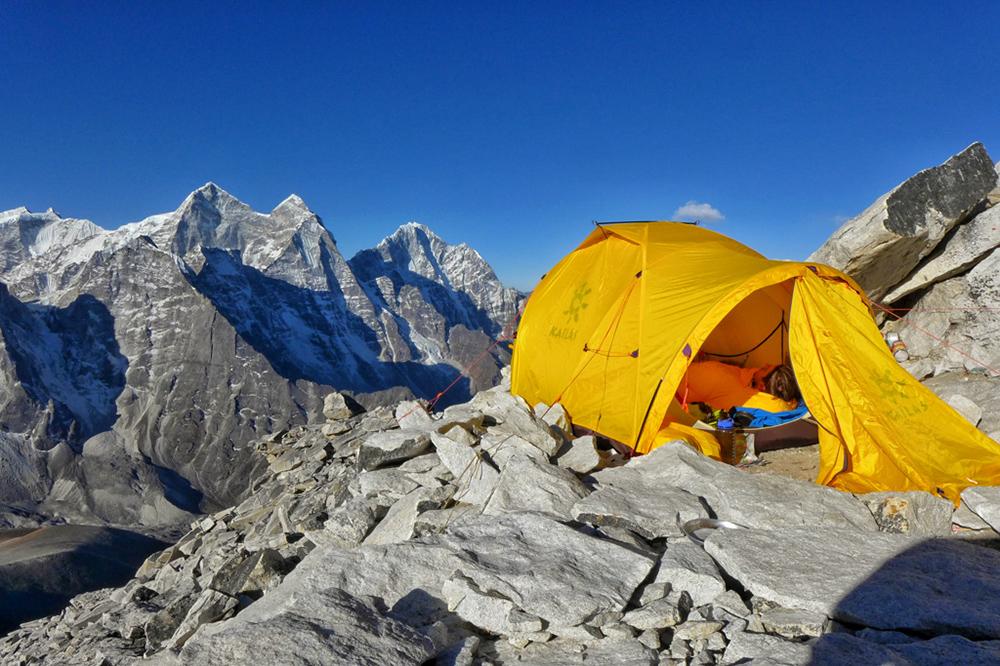
Therefore, before reading the review further and making a choice in favor of a particular tent, ask yourself:
- Are you looking for a durable tent for heavy use or something simple for an easy outdoor adventure?
- Are you planning to use the tent during long trips or for weekend hikes?
- How much living space do you need in a tent for comfort?
- Do you plan to stay in equipped campsites and put up a tent on flat ground or in the forest and in the mountains on cones, branches and sharp stones?
- Do you prefer to travel only in good weather and in comfortable regions, or will you use a tent at any time of the year and / or winter, as well as in extreme weather conditions – storms, hurricanes?
What should you pay attention to when choosing a light tent?
Materials
Most tents use nylon or the cheaper polyester. Polyester stretches less when wet, without sagging, but nylon is more durable. Both materials require a water-repellent treatment, silicone coating is most often used now, as it is most effective even in sub-zero conditions or with strong temperature changes.
Manufacturers are starting to use a new lightweight material more and more often – Dyneema (sometimes called Cuben Fibre), but it is even more expensive than nylon, which seriously affects the overall cost of tents. Dyneema is subject to rapid abrasion and must be handled with care. Therefore, at the moment it is only used for very ultra-light super-adventure tents.
Den
Fabric thickness is measured in denier and is marked with a number followed by the letter D. The lower the number, the smoother and thinner the material. Since denier is also a measure of weight, you can understand how heavy the material can be and, accordingly, the weight of the tent itself. So, for example, in the inner tent in MSR Hubba models, two types of the thinnest and most durable nylon are used – 20D ripstop nylon & DWR, 15D nylon micro-mesh, the awning is made of 20D ripstop nylon Durashield nylon, and the bottom is made of 30D ripstop nylon Durashield nylon.
Tent size and capacity
The declared capacity of a tent is not a standard criterion. This parameter is conditional, it consists of an average of 60 cm per person. But the same two-person tent can perfectly match the needs of both two people and a lone traveler who loves comfort and plenty of space. Keep in mind that even if two people can sleep side by side inside in the declared two-person tent, this does not mean that there will be enough space for storing equipment.
And if there is no large roomy vestibule, then the things folded in the tent will significantly limit the interior space. Therefore, it is important to pay attention to the specified dimensions. Look at the width and length of the bottom of the tent and relate them to your height and shoulder span. Then pay attention to the dimensions of the vestibules to see if there is enough space to fit all the backpacks.
Peak height
Another parameter to consider. Most compact tents have enough room to sit with your back straight, but not all. Especially if you are tall. An indicator of a comfortable peak height at which you can sit is in the range of 90-100 cm.
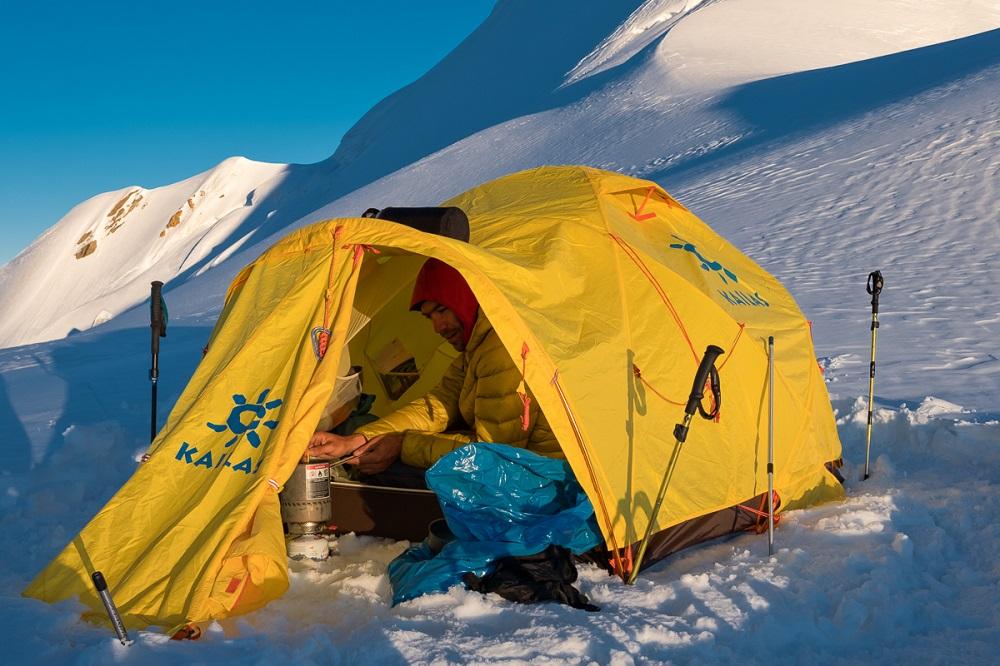
Ventilation
Lack of good ventilation leads to the formation of abundant condensation on the inner walls of the tent. Condensation begins to drip from the walls onto you and your equipment, and sleeping bags and things get wet when they come into contact with the walls of the tent. As a result, you run the risk of getting wet no less than in the rain. The presence or absence of condensate is influenced by several parameters in the complex:
- air permeability of the fabrics used;
- a design that provides the necessary clearance between the inner tent and the outer awning;
- the presence of well-placed ventilation windows that create an effective movement of air flow.
Waterproof or Water Resistant
Usually indicated in the characteristics of the awning and the bottom of the tent. You can read a lot of reviews that say that a tent with a 3000mm tarpaulin and bottom can withstand light rain, but not heavy multi-day downpour. And to withstand prolonged rain, the awning must have characteristics of at least 5000 mm, and the bottom – 5000-8000 mm. In part, this is true, but still quite conditional. In practice, a number of factors matter:
- the worse the tent is pulled, the faster it gets wet and leaks;
- if the awning is in contact with the inner tent, it will start to leak in this place;
- slow gradual wetting of the awning and leakage depends on the duration of being under a downpour.
In other words, if a lightweight tent made of thin nylon with low moisture resistance, but at the same time the frame provides its ideal tension and sufficient distance between the inside and outside of the tent, then such a tent will protect from rain just as well as one with more high rates of moisture resistance of the awning, but at the same time it is difficult to stretch it perfectly evenly and it stands with sagging and distortions of the fabric.
A lot also depends on the type of activity. If you plan to sit for a week, waiting for bad weather, as happens during mountaineering, or live in this tent at the base camp, then you should definitely choose a model with tent moisture resistance of 4000-5000 mm, and the bottom – 8000 mm. But when cycling or trekking, when you ride and ride in any weather, take down the tent every day and put it up again in the evening, these values may be lower.
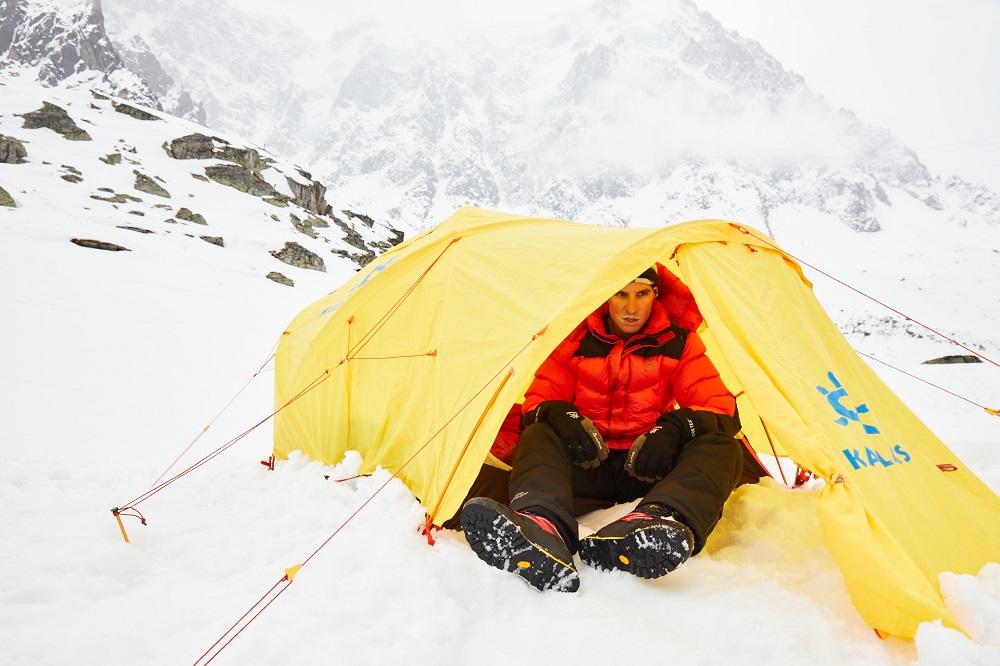
What is the difference between minimum weight and fully loaded weight?
The minimum weight is the lightest option for setting up a tent, while maintaining the main functionality. This means no pegs, extra braces, repair kit, extra floor, and any other non-essential items. “At home” everything is left without which you can do without.
How lightweight is an ultralight tent?
The constant push for lighter gear means that the definition of “ultralight” changes almost every year. However, by today’s standards, any two-man tent weighing less than 1.8 kg can rightly be called “ultralight”. Tents that range from half a kilogram to a kilogram are extreme options, in which some sacrifices are most often made – comfort, durability.
In my cycling and mountain climbing I have tried many different options for light and ultra-light tents and for myself I have chosen single-layer tents. However, they lose in comfort and have their own specifics, which means that in order to reduce weight, you have to make certain sacrifices in comfort and convenience. Therefore, in this review, we will consider options for two-layer lightweight tents.
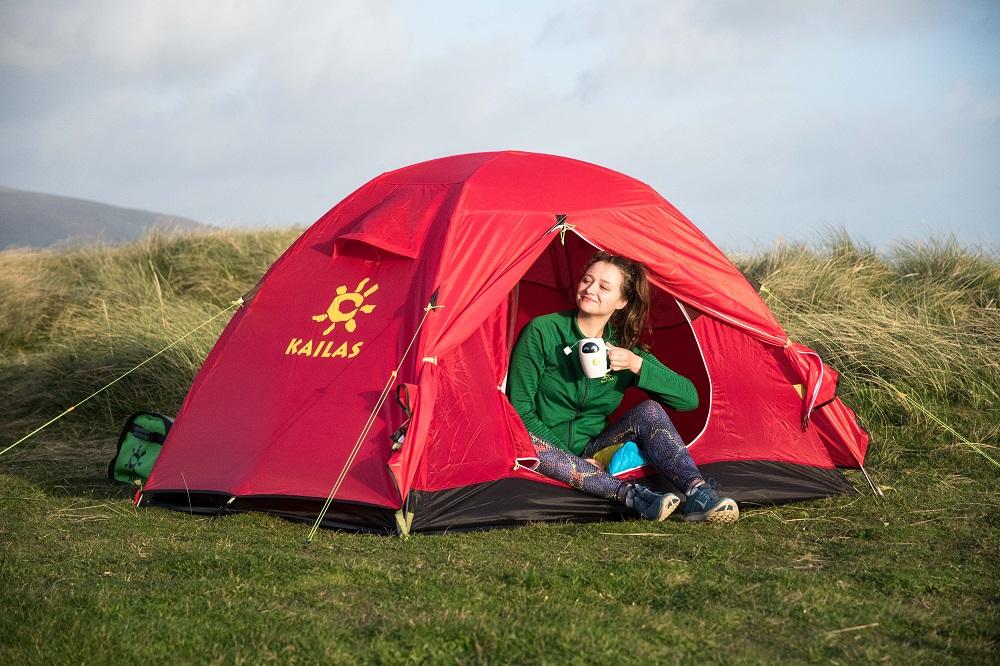
MSR Hubba
If I were asked to choose just one tent that would meet all my criteria and could be a worthy alternative to light and compact single layer tents, it would be the MSR Hubba.
This series is now the most popular among cyclists, bikepackers, climbers, trekkers and those who like to travel light. Well thought out ventilation, superb build quality and ultra-easy set-up, large interior mesh pockets, ample storage space under the awning. And all this is achieved with a relatively small weight and compact package size.
Mountain Safety Research, an American company with more than half a century of history, was originally focused on the production of equipment for climbers, but over time it began to manufacture camping equipment.
Launched in 2004, the MSR Hubba tents line, which includes one, two and three person models, immediately became a bestseller not only among MSR tents, but also one of the most popular models in the world.
One of the main reasons for such popularity is that it was the first to successfully implement the idea of a one-piece frame construction from poles with metal couplers-splitters – connecting the poles to each other with hubs – created in collaboration between MSR designers and DAC tent pole manufacturers. Now this system is very popular and is used by many manufacturers, as it significantly reduces the time for setting up a tent.
Since then, over the past couple of decades, the MSR Hubba series tents have been updated and modified several times. Thanks to the development of technology today, they have achieved a good balance between weight, functionality and durability. They are made even lighter and more compact by using lighter fabrics from the outdoor market, lighter tubes for the DAC FeatherLite NSL frame, and lighter pegs and fittings. MSR tents will last for many years. If they are well cared for, then throughout their entire life they will provide good protection from atmospheric influences – rain, snow and hail.
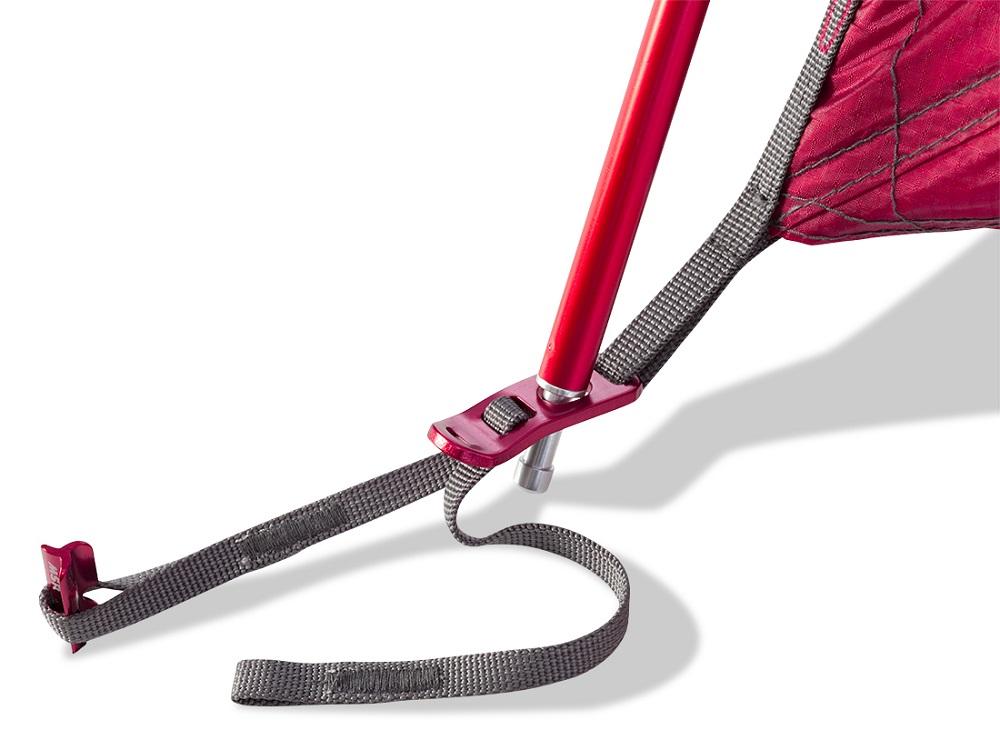
All MSR Hubba tents have a high arch and plenty of headroom. The height of Hubba Hubba, the smallest in the series, is 1 m. Two people of medium build can comfortably sit in it, with their shoulders straight and their backs straight, without touching the walls of the inner canopy at the slightest movement.
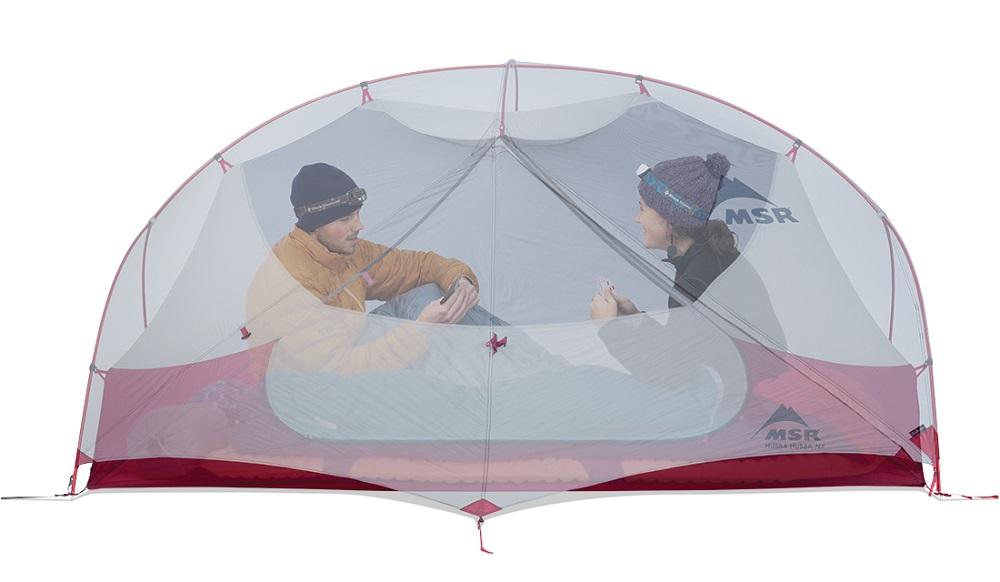
To all these advantages, you should add branded MSR StayDry inlets with a special fabric chute that diverts water flow to the side. Thus, water from the awning is not poured over the collar when entering the tent. StayDry entrances even allow you to keep the vestibules open in case of direct rain without wind.
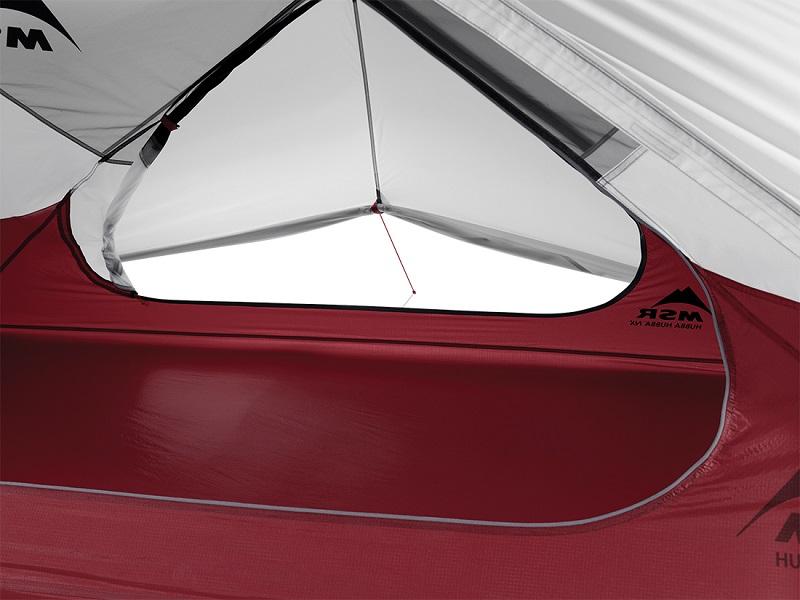
Thanks to the combination of fabrics used and a clever ventilation system, MSR Hubba stays warm in warm weather and cool when it’s cool outside. The inner tent has wide sides made of breathable nylon and a mesh top, the tent has opening vents, and for better air circulation, the vestibules can be slightly rolled up and raised.
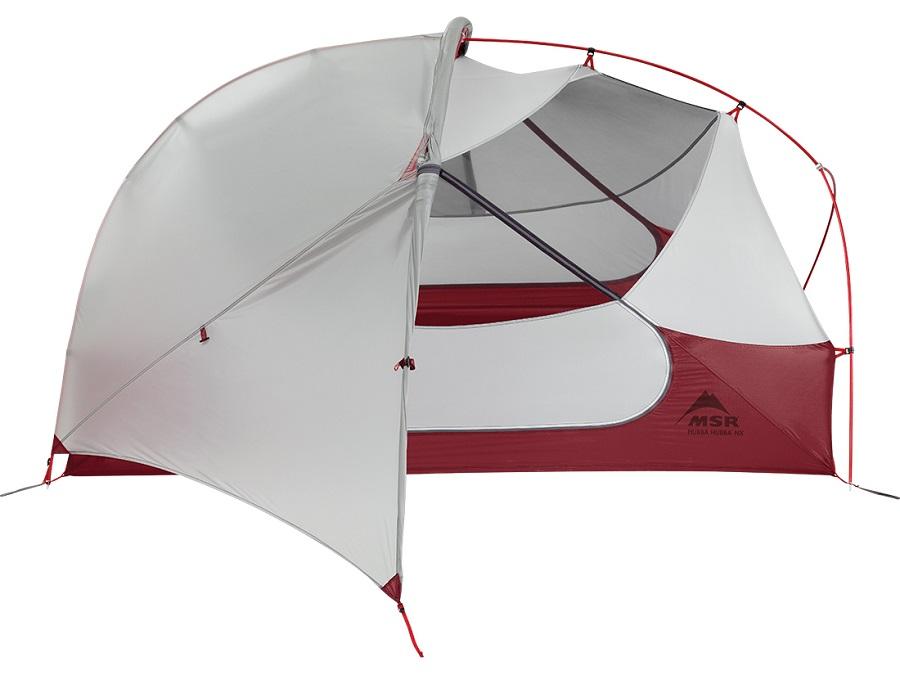
The frame system used in the MSR Hubba with minimizing arches makes it less wind resistant than tents with a classic hemisphere design. This may not be very successful if you put the MSR Hubba in the open during a strong hurricane. But, as already mentioned, there is no ideal model and something has to be sacrificed, in this case for the sake of maximum weight loss.
The choice is yours, but if you’re planning on using your tent in extreme storm conditions, you might want to opt for a more wind-resistant model.
For example, Salewa Litetrek Pro, which will be discussed later in this review. For example, the two-seater Salewa Litetrek Pro II Tent weighs only 300 grams heavier than the two-seater Hubba Hubba and is slightly more expensive, but it is more wind resistant and will provide longer moisture resistance during multi-day bad weather.
The two-seat Hubba Hubba, which weighs 1.54 kg in the minimum configuration and 1.73 kg in the full one, can be recommended for cyclists traveling solo over long distances or bikepackers riding in pairs. And also to all climbers who climb in an easy fast-and-light alpine style, trekkers and mountain tourists who value compactness and mobility. It is suitable for hiking and mountain climbing with overnight stays at bivouacs in the Caucasus, the Crimea, the Alps and other mountain systems where there are no such hurricane and extreme conditions as in Patagonia or the same Khibiny in winter.
Solo travelers for all of the above conditions will prefer the single MSR Hubba NX, with a minimum weight of 1.1kg.
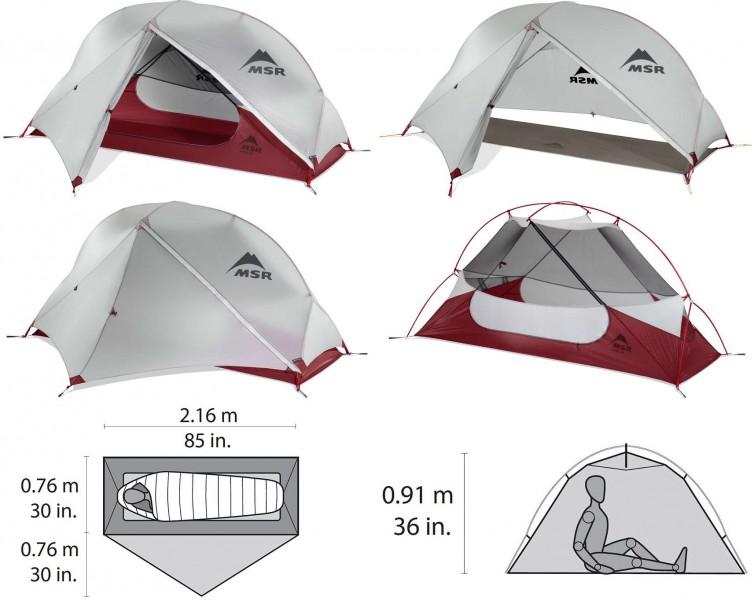
In addition, it is worth saying that all MSR tents use high-quality fittings, and the fabric is reinforced at high stress points.
MSR Elixir
The MSR Elixir Series is hard to classify as an ultralight tent from a fast&lighter’s point of view, but it’s a good option if you’re looking to save money and weight reduction isn’t a top priority, or if you’re looking for a more wind-resistant tent at a budget price.
This line has a very similar design to the MSR Hubba, but at significantly lower prices – almost half the price. Why? Because it uses cheaper and, accordingly, heavier fabrics.
The two-seater Elixir weighs 2.77 kg compared to the two-seater Hubba’s 1.76 kg, which is almost 60% heavier. The increase in weight comes not only from the fabrics, but also due to the classic frame, which has more load-bearing elements of the arcs. But it is this frame that makes the Elixir series tents more spacious and windproof, unlike the MSR Hubba.
In addition, the MSR Elixir has one feature that distinguishes it from all other models – in addition to the inner tent, it comes with a separate floor. You can take both a classic set – a two-layer tent, or just an awning + a bottom. The latter option is ideal for fast-and-light climbs and extreme hikes, where you need not a comfortable house, but only shelter from rain and wind.
Thus, MSR Elixir will be an excellent choice for those who value versatility and maximum reliability at a budget price.
Super light Kailas tents
Founded in 2003 by Chinese mountain biking and skiing adventurer Bajio Zhong, Kailas has earned worldwide recognition as one of the most innovative and technologically advanced companies in Asia. The brand is named after the sacred Mount Kailash, which every year becomes the destination of many religious pilgrims who follow the thousand-year traditions of their ancestors. Rugged terrain, high altitude and harsh weather add to the difficulties of such a pilgrimage, but nothing stops those who dare to climb. This passion, this desire of humanity for freedom, is the basis of the Kailas brand, under which goods for hiking, trekking and mountaineering are produced: clothes and shoes, tents, backpacks and other equipment.
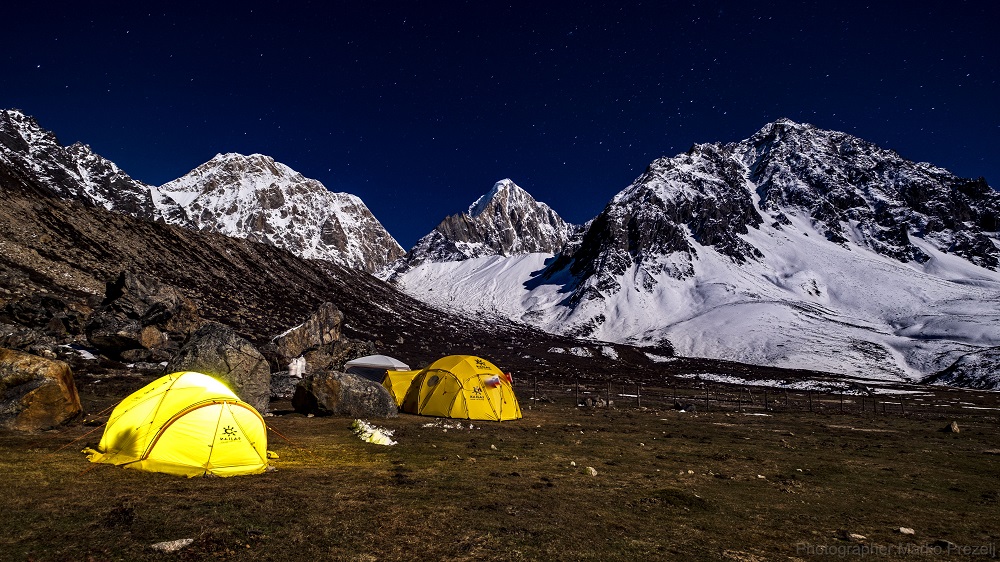
The Kailas Dragonfly UL Camping Tent has become a real alternative to single-layer tents by minimizing the frame. The weight of the double model is 950 grams, and the single model is only 720 grams. At the same time, unlike single-layer ones, Dragonfly UL has a small vestibule. This is a great advantage, because in addition to additional space for things, when it rains, the vestibule visor protects against water entering the tent when you get in and out of it. But there is one caveat.
As you understand, in order to lose weight, you have to sacrifice something. In this case, super light and thin fabrics are used not only in the manufacture of the inner part of the tent, but also for the bottom and awning, so they do not have very high moisture resistance: only 1200 mm in / st. Therefore, putting it in a puddle of water or spending the night under a tropical downpour is not worth it.
Models with a classic frame and denser materials, respectively, are heavier – double Kailas Triones 2P Camping Tent and single Kailas Master.
Salewa Litetrek and Salewa Litetrek Pro
The Salewa Litetrek is a real home for high-altitude hikes, climbs and expeditions in the harshest conditions – reliable, comfortable and stable.
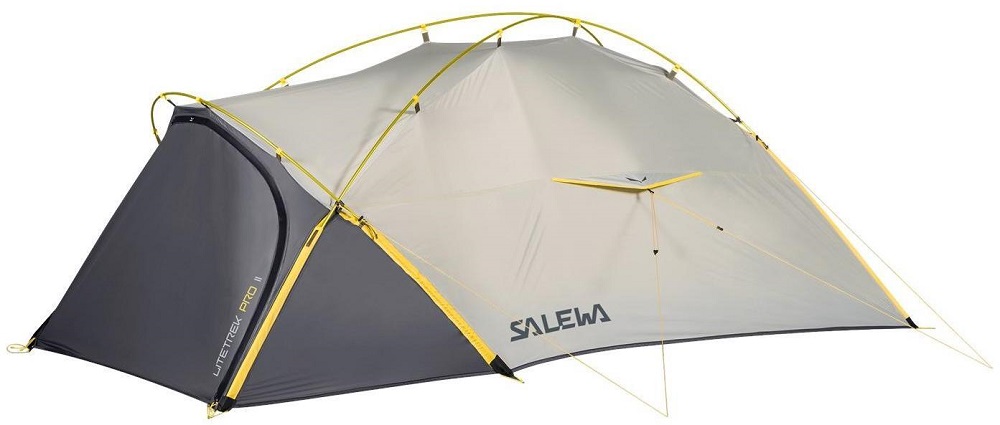
The classic dome design and the materials used with high water resistance ensure complete resistance to winds and all types of precipitation. In this tent you can comfortably sit out any bad weather for a long time. Thanks to the intuitive assembly system and the fact that the inner and outer tents are connected, the Salewa Litetrek sets up very quickly on any type of terrain. The design allows you to successfully place and secure it also on uneven surfaces, including small rock shelves and ledges.
Although the Salewa Litetrek is marketed as a three-season, it is quite suitable for winter hiking and climbing, as well as expeditions in subpolar conditions, such as skiing or ski touring.
There are two versions, the Salewa Litetrek and the Salewa Litetrek Pro, both with a choice of two-seat and three-seat options.
The Litetrek is slightly heavier than the Litetrek Pro as the tent, bottom and inner tent are made from polyester, which is heavier than nylon. In addition, the bottom moisture resistance index of Litetrek Pro is 10000 mm, while Litetrek has 5000. For overnight stays above the snow line, 5000 mm is enough. Yes, and under normal conditions of the campaign, if the tent does not literally float in a puddle of water, its bottom will also not get wet. To do this, you just need to follow some rules:
- do not put up a tent in a natural place where all the water drains during the rain – hollows, mouths, etc.
- make a small groove around the tent to drain water;
- in case of installation on a rocky shelf, find a flat place or a site with a slight slope and do not put the tent in a large hole.
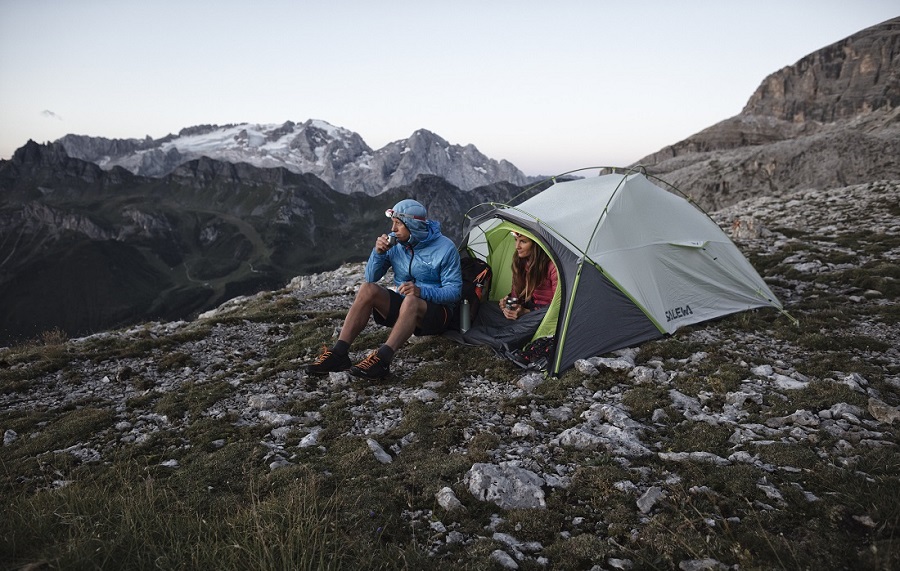
But if you need a reliable model for serious extreme conditions, then you should not save on weight and price, but it is better to immediately take the Salewa Litetrek Pro.
Salewa Micra
The classic and familiar design on two arcs allows you to quickly set up a tent at any time of the day and in any condition. True, it is worth considering that this design is not as resistant to hurricane winds as a domed one. Therefore, if you are planning to spend the night in extreme stormy conditions, then it is better to consider the Salewa Litetrek and Salewa Litetrek Pro options.
In general, this model can be considered a classic in terms of its ratio and well-balanced balance between functionality, moisture resistance, reliability, weight and price.
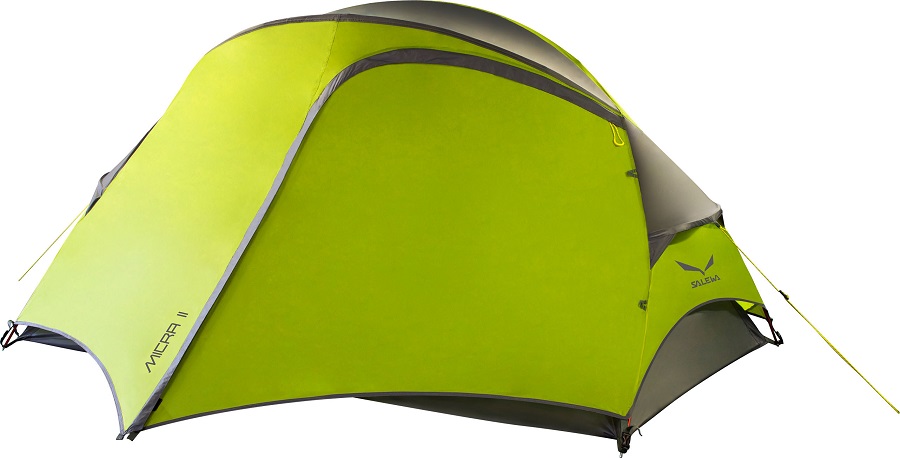
The Salewa Micra tent has been successfully used by tourists and climbers in their hikes and climbs for many years. A large number of internal pockets and a convenient ceiling shelf allow you to find and get the right thing at any time. Sophisticated ventilation windows, which do not get water even with a strong side wind. And many other thoughtful details and trifles.
Tramp Cloud
Tramp tents, which are produced by a St. Petersburg company founded by tourists, and most of whose employees are fond of outdoor activities, can be recommended to those for whom price is of paramount importance.
The lightest model, the 2.15kg Tramp Cloud 2 Si 2-man double-layer tent with two entrances, and the 2.26kg Tramp Cloud 3 Si 3-man tent, are similar in design to the MSR Hubba and have the same frame with a hub articulation system. arcs. The ripstop nylon outer canopy is UV resistant.
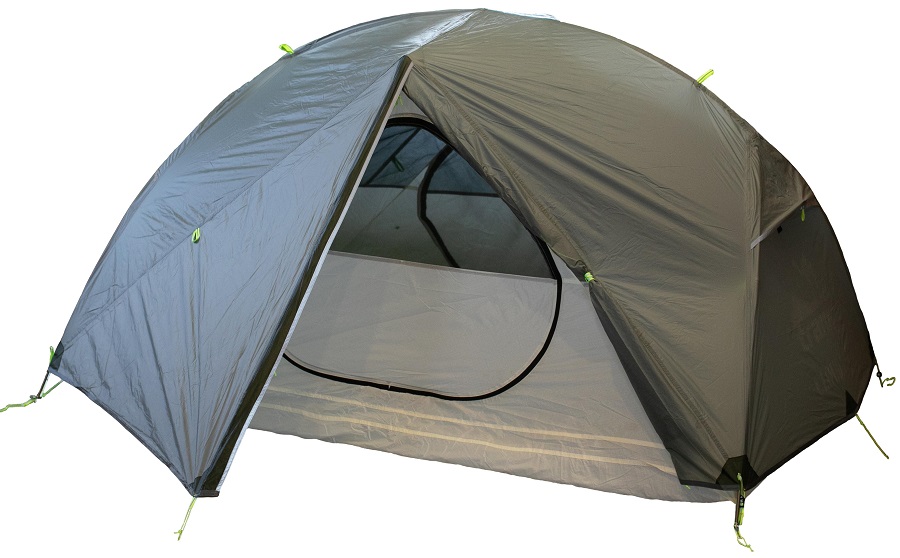
The Tramp Cloud tent, given its consumer-friendly price, is a worthy option for trekking and hiking, bikepacking and cycling, climbing trips, outdoor weekends for outdoor activities or fishing, especially if you spend the night in the comfortable conditions of a campsite with equipped areas.
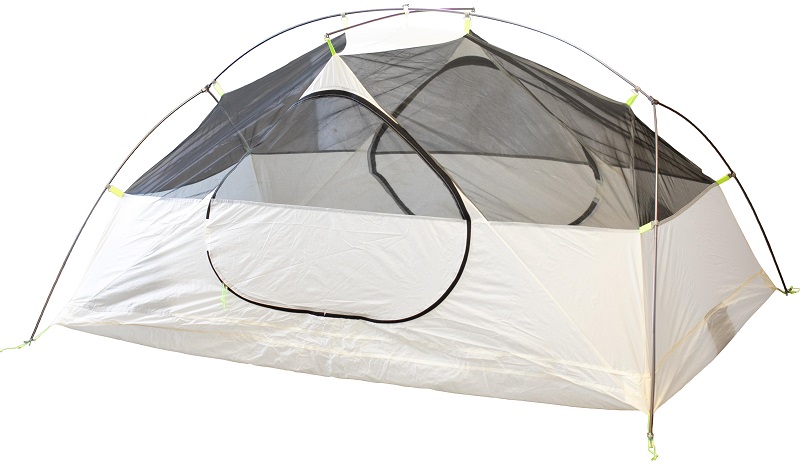
One of the nuances of Tramp Cloud is the thin fabric of the bottom. For the sake of weight reduction, a very thin 15D ripstop nylon with silicone treatment is used. Therefore, in wild camps with all the ensuing features and uneven terrain, it is necessary to use an additional solid bottom, and this is another plus of 200 grams of weight. If this is critical for you, then you should buy MSR Hubba, but its price is much higher.
Perhaps this is the record holder among budget tents in terms of the “weight – price” ratio.
Low cost is achieved due to cheap materials: fiberglass poles, inner tent and awning made of polyester, bottom made of reinforced polyethylene – terpauling, a material now common used for temporary canopies.
At the same time, the Tramp Lite tents perfectly perform their functions: they do not get wet even if they are installed on wet ground and in heavy rain, thanks to the absolutely waterproof terpauling bottom and good moisture resistance of the awning fabric – 4000 m.
They have a good through ventilation system and a very spacious vestibule in which you can cook when it rains. The Lite Camp and Lite Tourist models have two vestibules, while the Lite Fly has one.
The tents themselves, by the way, are also very spacious for two people. So, the Tramp Lite Fly has a width of 150 cm, which significantly exceeds the standard size of sports “kopeck piece”. The peak height of 110 cm allows you not only to sit with your back straight, but also to change clothes comfortably. Tramp Lite tents can be purchased if you occasionally get out into nature and do not consider it rational to buy expensive equipment.
BTrace
The super-minimalistic BTrace 2022 Bike tent, as its name suggests, is primarily for cyclists.
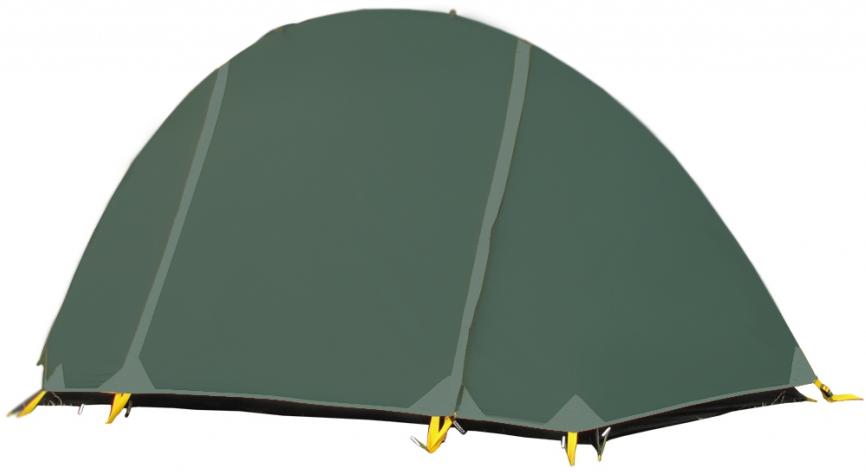
The tent is light and compact with a minimum internal space, which is enough for the “laying” of the tourist himself and a small number of things. Ideal for weekend trips, for short distances, where there is no need to take a large amount of clothes, equipment, products with you.
In conclusion, I would like to say that the fast-and-light style implies a certain amount of extremeness. After all, you have to significantly save on things and familiar details that are sometimes necessary for survival. The tent is one of the equipment on which your well-being depends on the campaign. At the same time, it is the most voluminous and heaviest item, taking up a lot of space inside the backpack. Therefore, the choice should be taken very seriously.
If you do not have enough experience of survival in different conditions, then it may be worth taking a slightly heavier tent, but solid and reliable. If you have already gone through a hurricane and a storm, a blizzard and a snowstorm, then feel free to choose the lightest of the described models and enjoy the next adventure!
